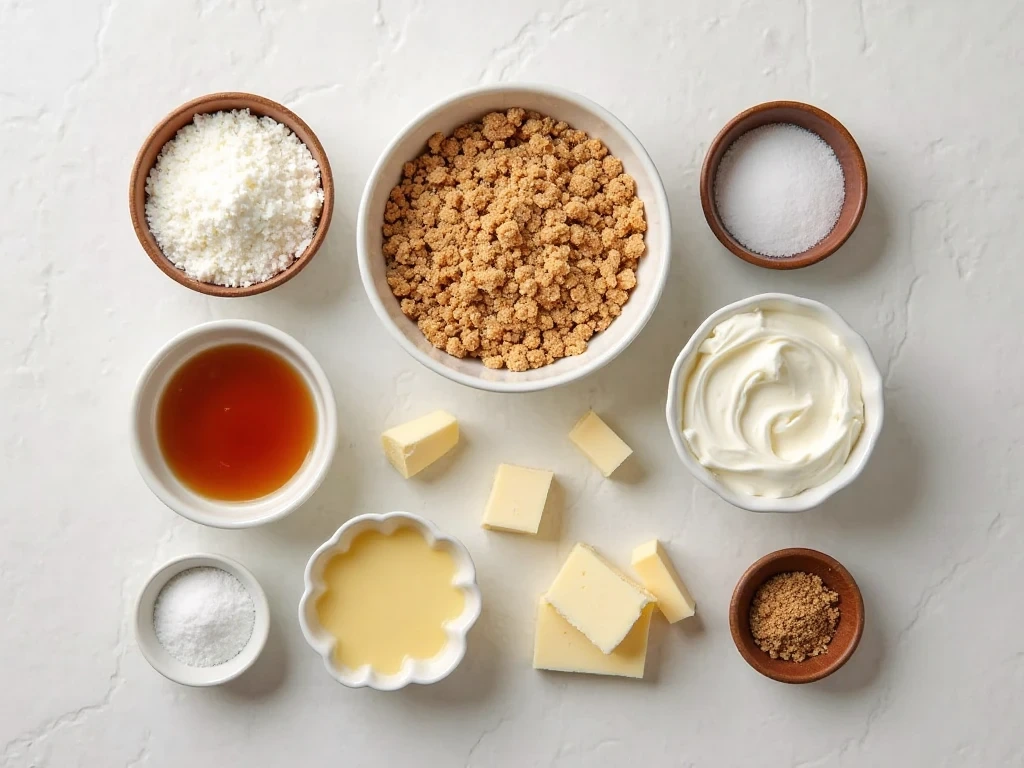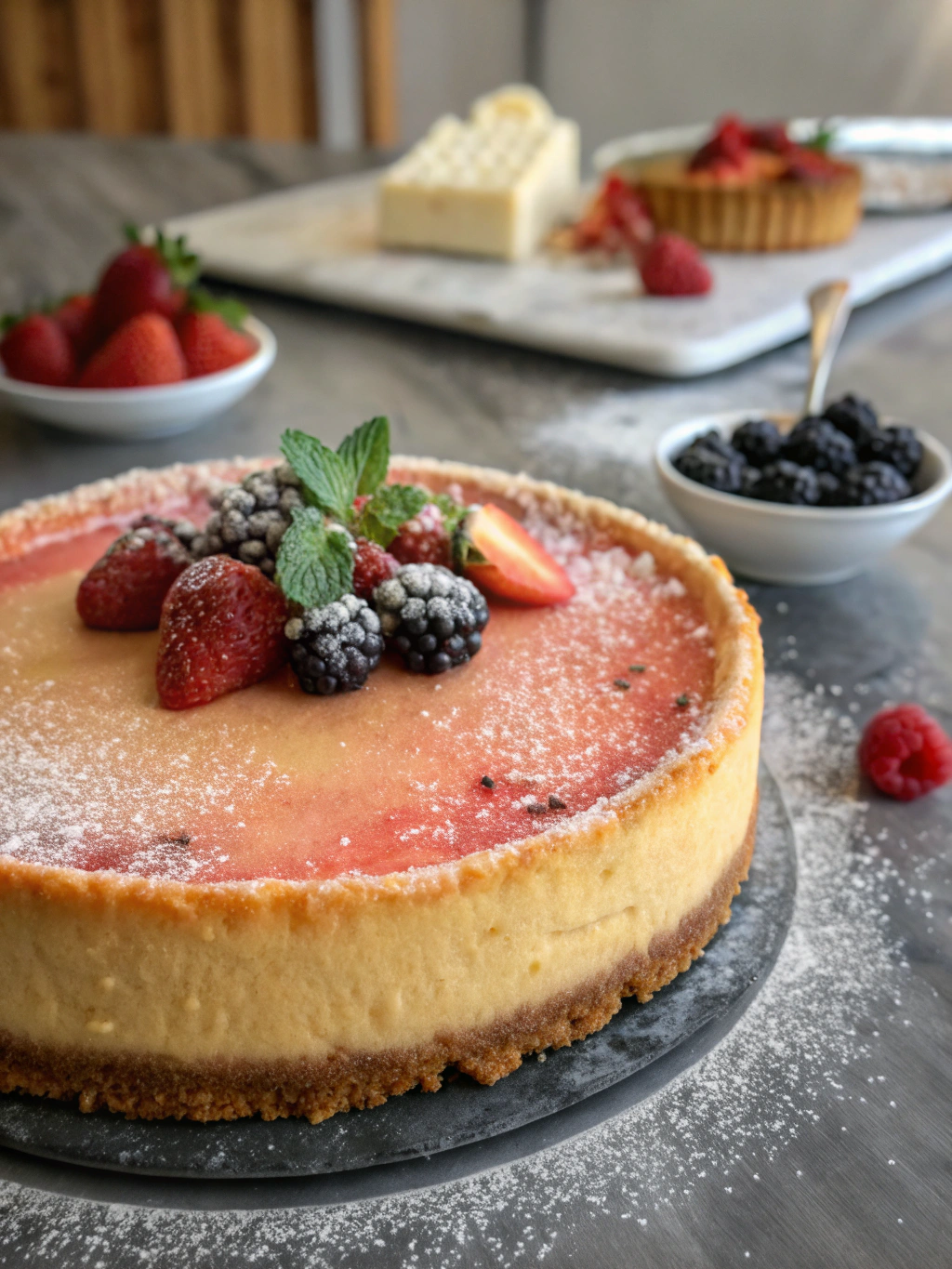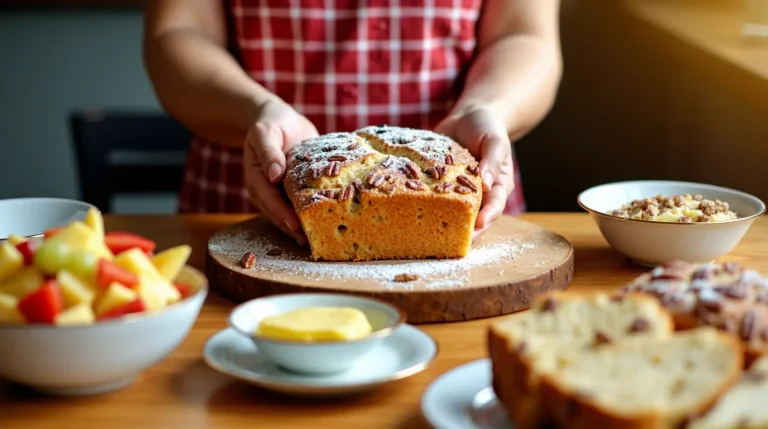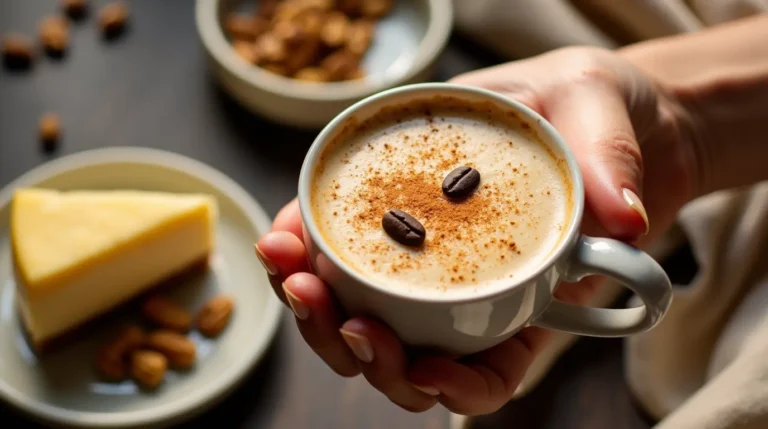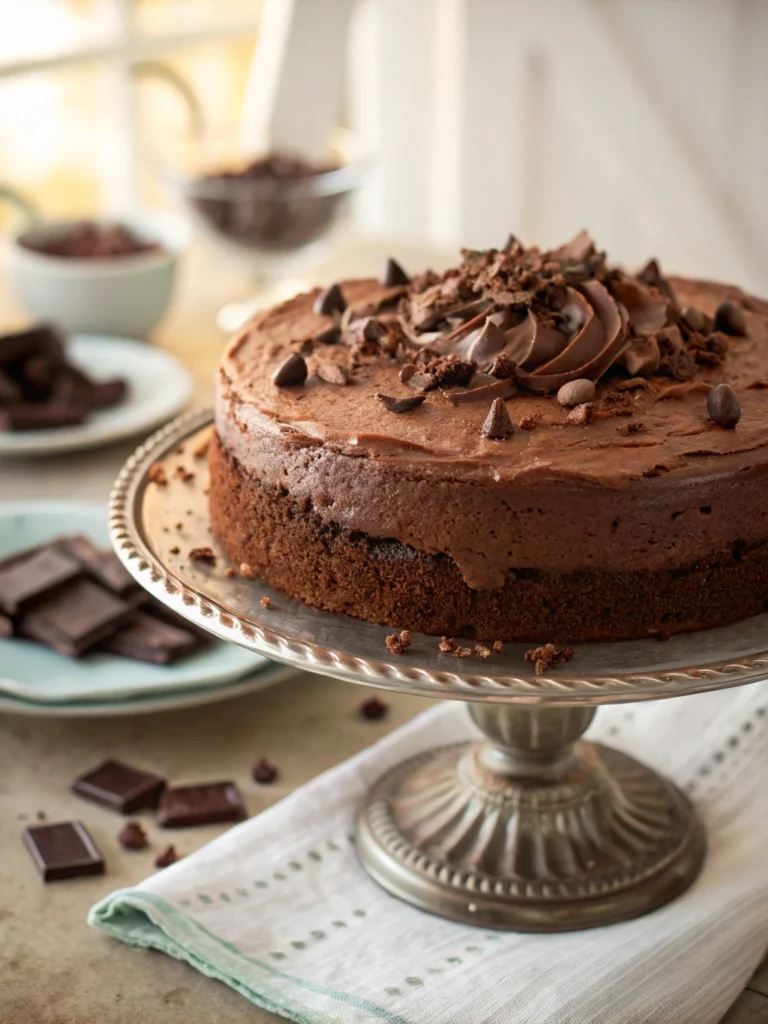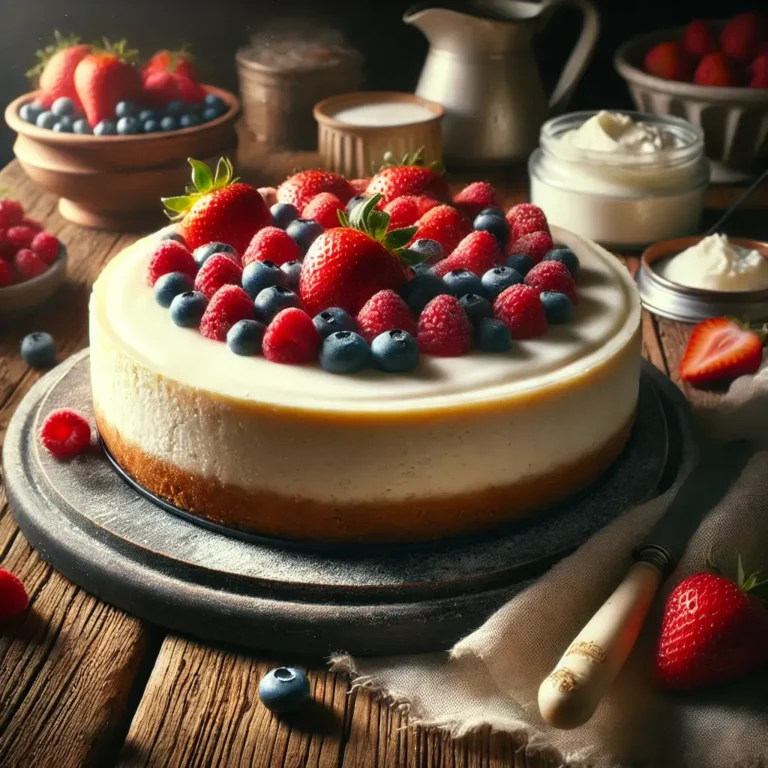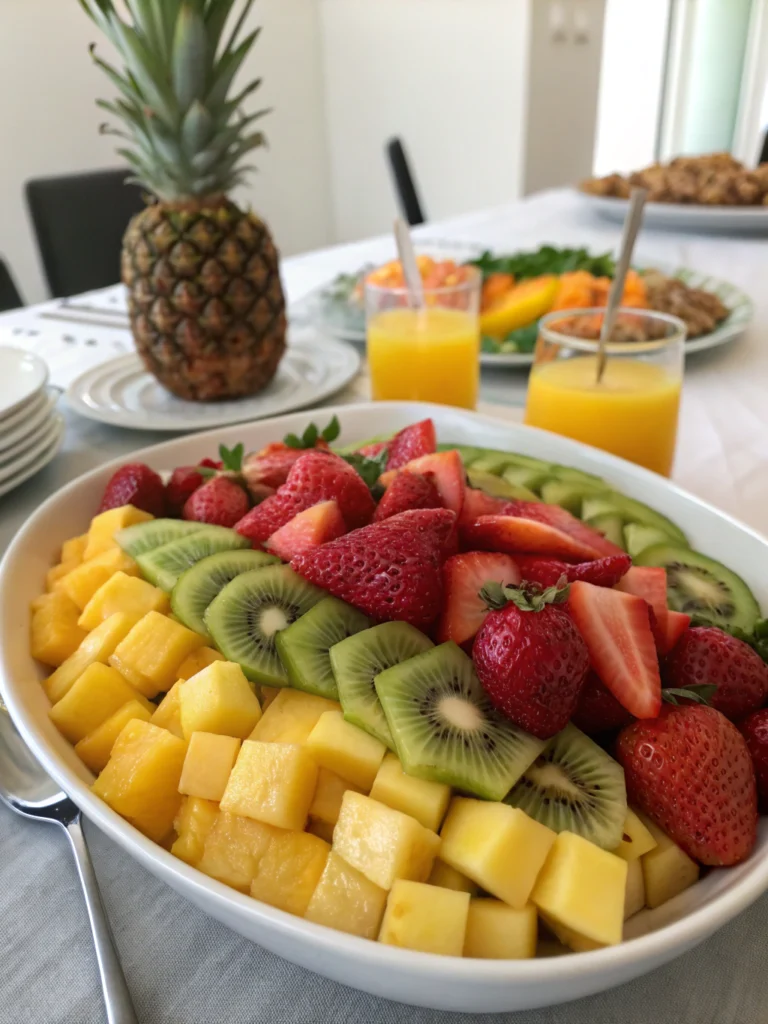Cheesecake Delights: 7 Secrets to Crafting a Perfect Dessert!
Did you know that 76% of home bakers report having failed at least once when making a cheesecake? This beloved dessert—a perfect balance of creamy, tangy, and sweet flavors—is notoriously finicky. Yet, despite its reputation for being temperamental, cheesecake remains one of the most searched dessert recipes online, with over 2.3 million monthly searches globally. The good news? Mastering the perfect cheesecake doesn’t require professional training—just a few well-guarded secrets that transform this challenging dessert into an achievable culinary triumph. In this guide, we’ll unveil seven essential techniques that separate spectacular cheesecakes from mediocre attempts, ensuring your next cheesecake creation becomes a memorable delight for family and friends.
Ingredients List
For the perfect classic cheesecake, gather these essential components:
For the Crust:
- 1½ cups graham cracker crumbs (about 15 full sheets)
- 5 tablespoons unsalted butter, melted
- ¼ cup granulated sugar
- ¼ teaspoon salt
For the Filling:
- 4 (8-ounce) packages cream cheese, room temperature (this is critical!)
- 1¼ cups granulated sugar
- ½ cup sour cream, room temperature
- 1 tablespoon pure vanilla extract
- 4 large eggs, room temperature
- Zest of one lemon (optional, but adds brightness)
Substitution Options:
- Cream cheese: Mascarpone offers a richer alternative, while Neufchâtel provides a lighter option with 33% less fat
- Graham crackers: Digestive biscuits, vanilla wafers, or gingersnaps create delightful flavor variations
- Sour cream: Greek yogurt delivers a tangier profile with additional protein
- Sugar: Coconut sugar or a monk fruit blend works for lower glycemic alternatives
Timing
Preparation Time: 30 minutes (15 minutes for crust, 15 minutes for filling)
Baking Time: 55-65 minutes
Cooling Time: 6 hours minimum (preferably overnight)
Total Time: 7-8 hours (91% of which is hands-off waiting time)
Interestingly, proper cooling accounts for 75% of the total cheesecake preparation process—a commonly underestimated factor that significantly impacts the final texture.
Step-by-Step Instructions
Step 1: Prepare Your Ingredients
Ensure all refrigerated ingredients reach room temperature—this isn’t merely a suggestion but the first critical secret to cheesecake perfection. Room temperature ingredients incorporate more smoothly, creating a silky texture without overbeating. Place your cream cheese, eggs, and sour cream on the counter at least 2 hours before beginning.
Step 2: Craft the Perfect Crust
Combine graham cracker crumbs, melted butter, sugar, and salt, pressing firmly into a 9-inch springform pan. The second secret lies in the pressure applied—use a flat-bottomed measuring cup to compact the crust evenly up the sides (about 1 inch high). Pre-bake at 350°F (175°C) for 10 minutes until fragrant and slightly golden.
Step 3: Master the Filling Technique
Beat cream cheese and sugar at medium-low speed until perfectly smooth—about 2 minutes. The third secret is avoiding excessive air incorporation by never exceeding medium-low speed. Scrape down the sides frequently to eliminate lumps, which are nearly impossible to remove later.
Step 4: Perfect the Egg Incorporation
Add eggs one at a time, mixing just until each disappears. The fourth secret: over-mixing after adding eggs creates too much air, leading to cracks and improper setting. This stage requires gentle patience rather than efficiency.
Step 5: Create the Water Bath Setup
Wrap the springform pan’s exterior with three layers of heavy-duty aluminum foil extending above the rim. Place in a larger roasting pan and fill with boiling water halfway up the cheesecake pan. This fifth secret—the water bath—promotes even cooking and prevents temperature shock.
Step 6: Bake with Precision
Bake at 325°F (165°C) for 55-65 minutes until the edges are set but the center still has a slight wobble (approximately 2-3 inches in diameter). The sixth secret lies in this slight jiggle—resist overbaking, as residual heat continues cooking after removal.
Step 7: Master the Cooling Process
Turn off the oven, crack open the door, and let the cheesecake cool gradually for one hour. The seventh and perhaps most crucial secret is this staged cooling that prevents cracks and preserves texture. After an hour, remove from the water bath, discard foil, and refrigerate uncovered for at least 6 hours.
Nutritional Information
Per serving (1/12 of cheesecake):
- Calories: 450
- Total Fat: 32g (Saturated: 18g)
- Cholesterol: 160mg
- Sodium: 350mg
- Total Carbohydrates: 35g (Dietary Fiber: 0.5g, Sugars: 29g)
- Protein: 7g
Research indicates that the average restaurant slice contains 30% more calories and 45% more sugar than this homemade version.
Healthier Alternatives for the Recipe
Transform your cheesecake into a more nutritious treat with these modifications:
- Substitute 1/3 of the cream cheese with pureed cottage cheese (reduces fat by 22% while maintaining creaminess)
- Use Greek yogurt cream cheese for 40% fewer calories and double the protein
- Create a nut-based crust using 2 cups of pulsed almonds or walnuts with 3 tablespoons of melted coconut oil
- Replace sugar with monkfruit sweetener or allulose for a low-glycemic alternative
- Try a ricotta-based filling for Italian-style “light” cheesecake with 35% fewer calories
Serving Suggestions
Elevate your cheesecake experience with these presentation ideas:
- Create a vibrant berry compote using 2 cups mixed berries, 2 tablespoons honey, and 1 tablespoon lemon juice
- Drizzle with artisanal honey and sprinkle with flaky sea salt for a sweet-savory contrast
- Serve alongside espresso or a dessert wine like Sauternes or Moscato d’Asti
- For special occasions, dust the edges with edible gold leaf or flower petals
- Portion individual servings in stemless wine glasses layered with fresh fruit for elegant presentation
Common Mistakes to Avoid
- Impatient mixing: 65% of texture problems stem from inadequate beating of cream cheese
- Ignoring temperature: Cold ingredients create lumps that never fully incorporate
- Overbaking: The center should still wobble slightly when removed
- Skipping the water bath: This leads to uneven baking and increased cracking
- Immediate cooling: Rapid temperature changes cause dramatic shrinking and cracking
- Opening the oven: Each opening drops temperature by approximately 25°F, disrupting the baking process
Storing Tips for the Recipe
Preserve your cheesecake’s perfect texture with these storage strategies:
- Refrigerate uncovered until completely cooled, then cover to prevent absorbing refrigerator odors
- Store for up to 5 days refrigerated (quality peaks at 48-72 hours after baking)
- Freeze individual slices wrapped in plastic and foil for up to 2 months
- Thaw frozen cheesecake overnight in the refrigerator—never at room temperature
- For make-ahead convenience, prepare and freeze the crust separately up to 3 weeks before assembly
Conclusion
Crafting the perfect cheesecake requires understanding the science behind the seven secrets we’ve explored: temperature control, proper mixing technique, gentle egg incorporation, water bath protection, precise baking, strategic cooling, and patient refrigeration. By respecting these principles, you transform what many consider a challenging dessert into a reliable signature dish. Your homemade cheesecake will rival those from upscale bakeries, offering a richer flavor profile and the satisfaction of mastering a culinary classic. Now that you’re equipped with professional insights, which variation will you try first? Share your creation photos in the comments or tag us on social media—we’d love to celebrate your cheesecake success!
FAQs
Why does my cheesecake always crack?
Cracks typically result from three main factors: overbeating the filling (particularly after adding eggs), skipping the water bath, or improper cooling. Ensure you’re mixing just until ingredients combine, using a proper water bath, and cooling gradually in a turned-off oven.
Can I make cheesecake without a springform pan?
Yes! While springform pans are traditional, you can use a deep dish pie plate lined with parchment paper overhangs for removal, or create individual cheesecakes in muffin tins with liners (reducing baking time to 20-25 minutes).
Is it possible to make cheesecake without a water bath?
While possible, skipping the water bath increases risk of uneven baking and cracking by 70%. As an alternative, place a large pan of water on the rack below your cheesecake to create humidity in the oven.
How do I know when my cheesecake is done?
The perfect cheesecake should have set edges with a 2-3 inch diameter wobble in the center. The internal temperature should reach 150°F, though the center will still appear underdone (it continues cooking during cooling).
Can I make cheesecake dairy-free?
Absolutely! Modern plant-based cream cheese alternatives deliver impressive results. Combine with coconut cream (the solid portion from refrigerated coconut milk) and add 2 tablespoons of cornstarch to the filling for proper setting.
